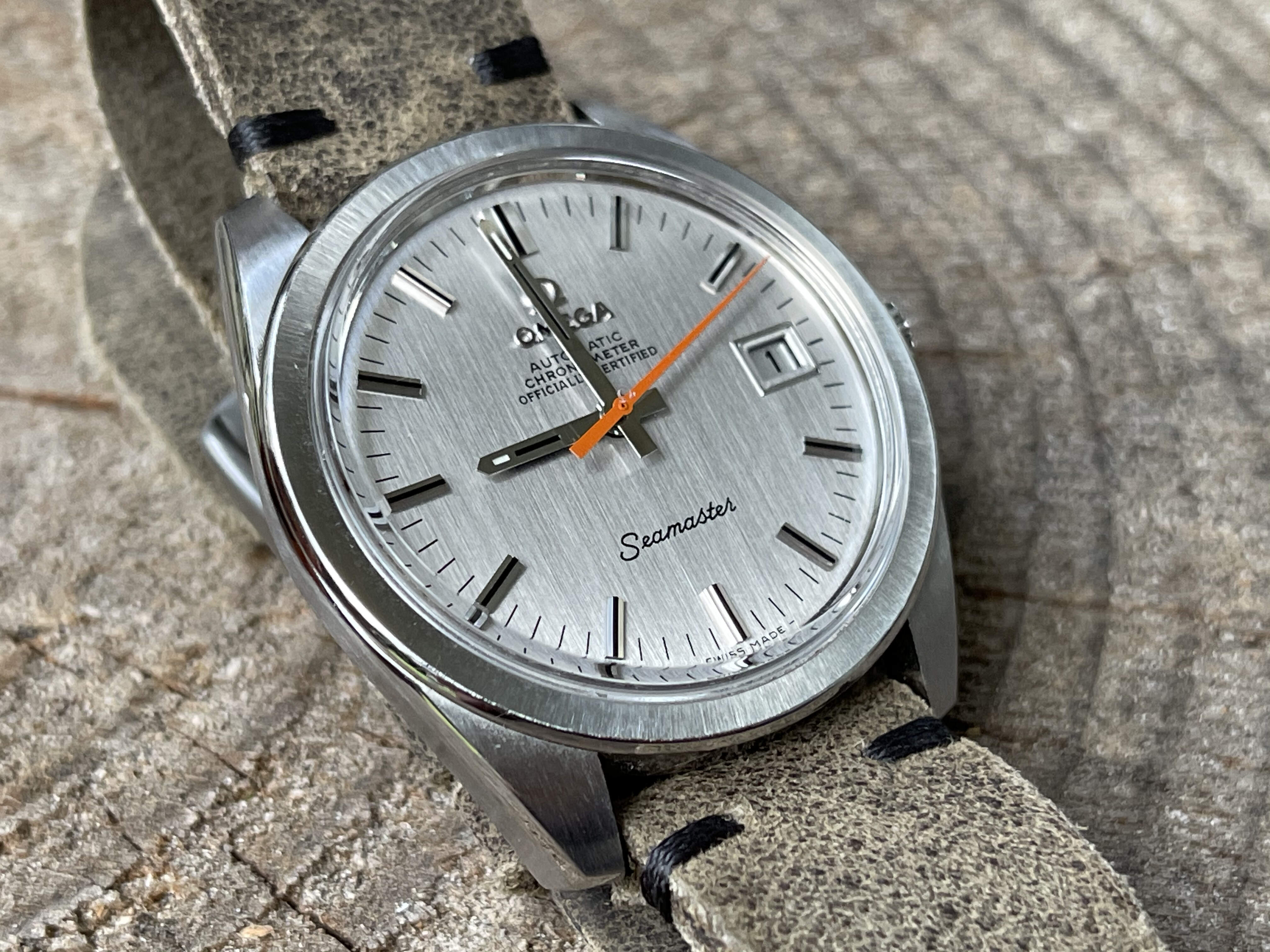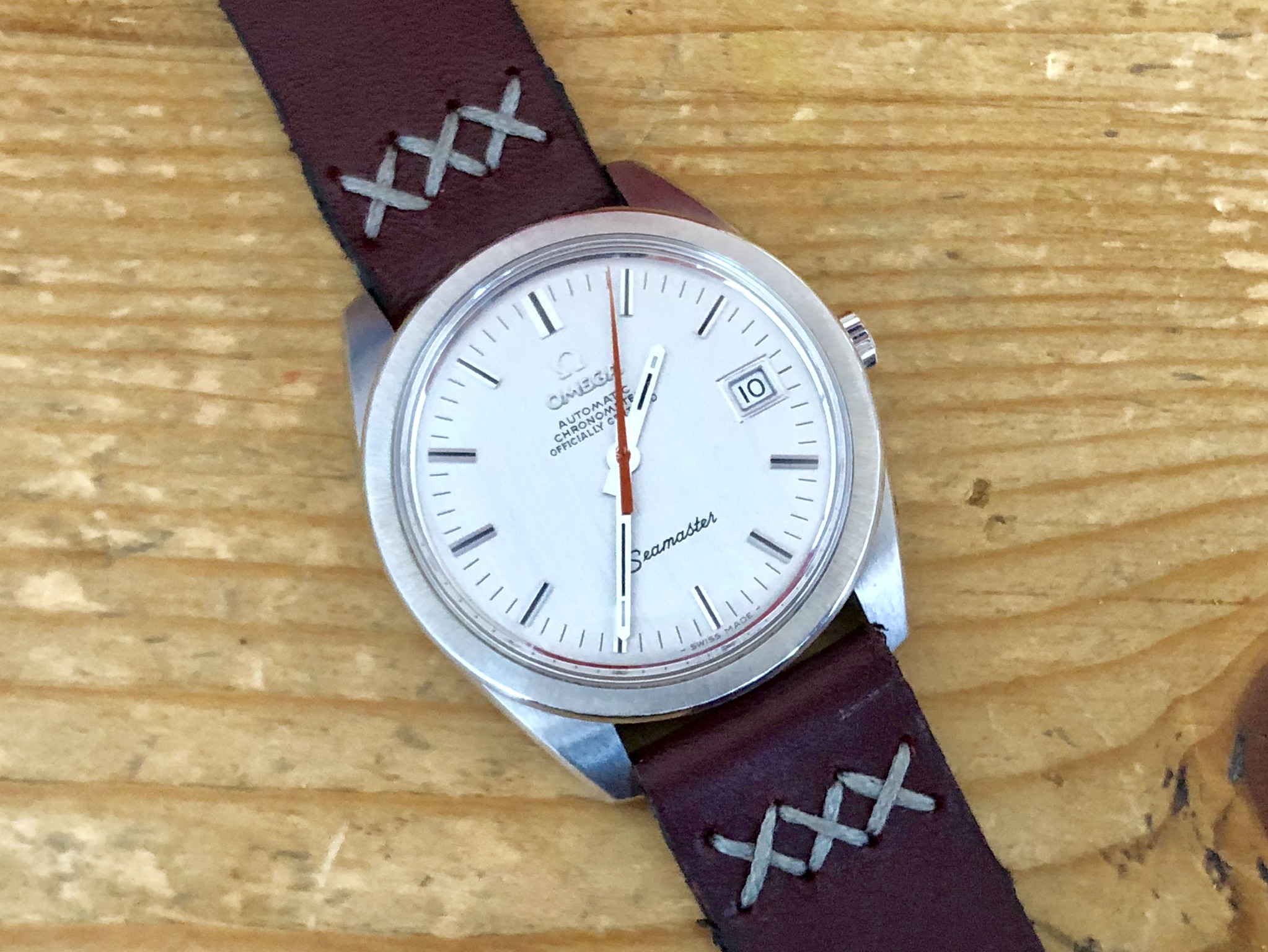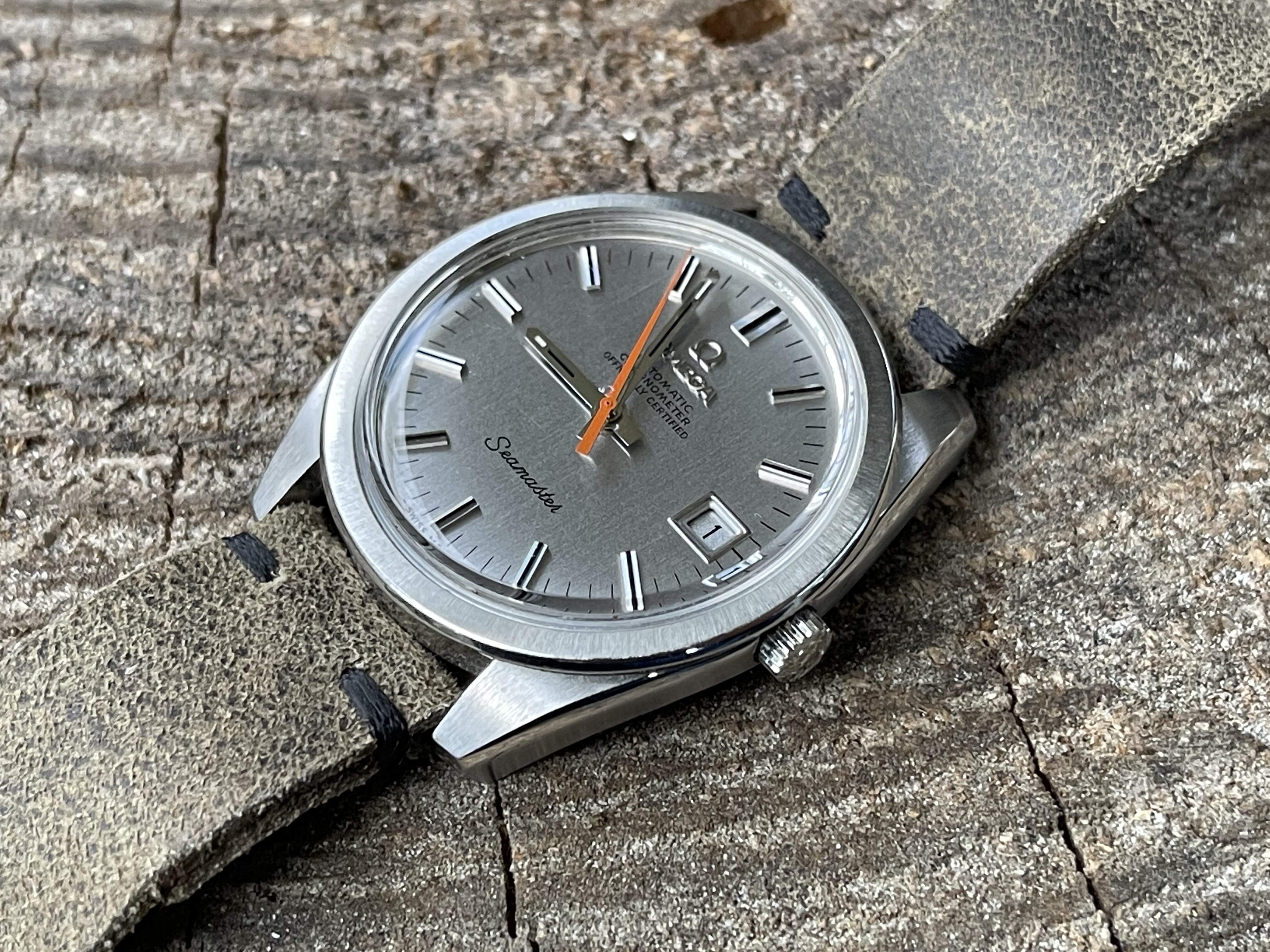
Omega Seamaster 564- 168.022 (Sold)
€ 1275.00
Sold out
| About | Details | and then some |
|---|---|---|
| Manufacture | Omega | Seamaster |
| Model reference | 168.022 | 564-168.022 |
| Movement | Automatic | |
| Caliber | 564 | |
| Dial | Grey Linen | |
| Case | 36x41x10mm | Steel |
| Lugs | 19mm | |
| Bracelet | 784 | 19cm |
| Crystal serial # | OEM Omega engraved | Acrylic |
| Timegrapher | Accuracy:+tbe | |
| Jewels | 24 | |
| Serial # | 25xxxxxxxx | Production: 1967-1974 |
| Condition | Excellent | |
| Service | Omega Full service | Service papers |
| Box & Papers | No box | No papers |
Nowadays, the value of the Seamaster dress watch is based on the fact that they are attractive watches to non-collectors. However, the fact that some models are chronometers makes these particular Omegas interesting to all collectors of chronometers. But then, during this era Omega was a true manufacture, making their movements in-house. Later they moved to ETA based movements, which were still good but lacking the caché of in-house.
The Omega Seamaster Ref. 168.022 Chronometer features the caliber 564 chronometer grade automatic movement with no hacking - this can be achieved however by setting the time and turning the minute hand slightly counter clockwise. The continuous pressure will stop the seconds hand, but only when power reserve is almost out..
The Seamaster chronometer has a 50 hours power reserve, runs at 19,800 bph, has a quickset date (by repeatedly pulling the crown!) and center sweep seconds.The second hand´s pinion is driven indirectly and has a retention spring that holds it down a bit to stabilize it and ensure that it moves continuously.
With serial numbers starting at 25.000.000 this model (with serial 25xxxxxx) did not hit the market until 1967, so that dates this watch between 1967 and 1974, part of Omega’s international collection of that era. The serial number of this watch of course is stamped on the movement itself - which also shows that it has 24 jewels and is regulated to five positions and temperature - no mean feat as we are talking about a temperature range of freezing cold to tropical heat! This had to be done of course in order to meet chronometer standards. These beauties, as all the Omega movements of this era, had to be finished to perfection to achieve precision and for instance had their famous (chemically stable) copper plating, giving them a really nice rose gold-like look to them. Pretty much every Omega movement has a high polish finish, but this one is different. It has a matte finish to the copper plating, which is kind of neat.
All this would result in a chronometer certificate that would explicitly show how precise the particular watch would run and how the chronometer certificate was earned. The certificate would also have the exact movement number recorded on it.
As mentioned, these are definitely not your regular seamasters, since the cal. 564 version is much more rare than the (exact same!) cal. 564 Constellation. Arguably, calibre 564 Seamaster chronometers in good condition should be of higher value compared to their Constellation cousins because relative numbers were small.
The date only version of this watch is actually even less common than the day-date version. The base calibre for the calibre 564 Constellation is the 17-jewel calibre 563. The additional 7 jewels of the calibre 564 are devoted to the winding system as they were in the 551. There are few differences between the 563 and 564 and both feature the quickset date function.
The date change function of the calibre 564 may seem a bit odd but isn’t rocket science. Instead of rotating the crown to advance the date, a pull-push motion allows the date to be advanced day by day. There are three positions of the crown, and as the crown is pulled out from the lock position 1 to its farthest point at position 3 it engages a spring that impels the date lever to engage the teeth of the date, advancing the date by one day. The process is repeated until the correct date appears. To set the hands, position two of the crown is selected and the crown is rotated until the correct time appears.
In this Seamaster range some variation is apparent. Hands and markers are most noticeable of course, and the fact that they are lumed or not. The second hands for instance is either silver or orange, the other hands can be sword or batton style. One can tell which feature set is original to the watch because if there was lume applied there would be T - SWISS MADE - T printed at the bottom of the dial or at least one T on either side of SWISS MADE - this depends on the amount of luminous tritium used. The non-lume versions conversely are hard to find..
On with the specs, the top of the case is brushed in a vertical pattern, the sides are horizontally brushed. The bevel edge next to the top side is polished. The case diameter is 36,5 mm across without the crown and on the caseback the recessed and embossed medallion should be sharp, showing no signs of polishing.
Lug width is 19 mm, standard for that period. This lug width looks best on these larger size cases which measure 10 mm thick - to provide room for the 360-degree winding rotor. On the bezel ring surrounding the crystal, there is a sunburst pattern. The sides of this bezel are polished. This watch should have an original logo stamped crystal, as well as the correct signed stainless steel crown. The original dial can feature a sparkling finish, which was used for only a short period of time, called Argent Graine, or it can be finished brushed circular or linear. On the dial are silver baton hour markers with onyx inlays and black stripe printed minutes indices, and of course the applied OMEGA logo with chronometer references below. The silver framed date window at 3 o’clock has been applied around the cut out.
This understated Seamaster is often overlooked - as most dress watches can be. It requires an eye for detail and expertise that the casual collector does not have. In my opinion Omega expertly used this fact to capitalize on the flashier Constellation models. But when value is considered other considerations come into play. These for instance were great watches for everyday use, but because of their high purchase value (roughly double that of a normal Seamaster), they were usually treated with great care, and Omega made most of them specifically in the Constellation range. Seamaster chronometers then are extra special, these are simply the best dress model watches in the Seamaster range.













